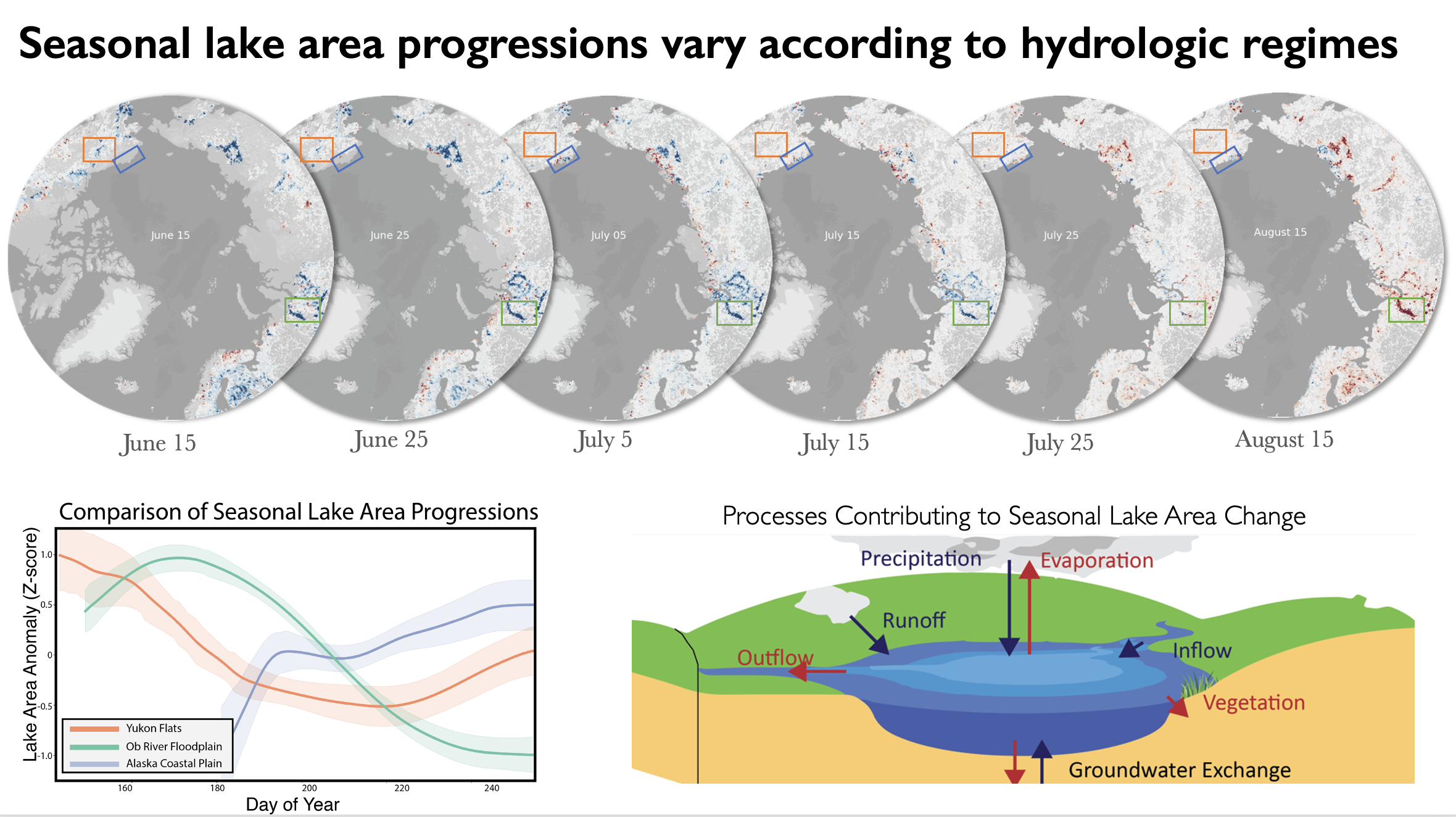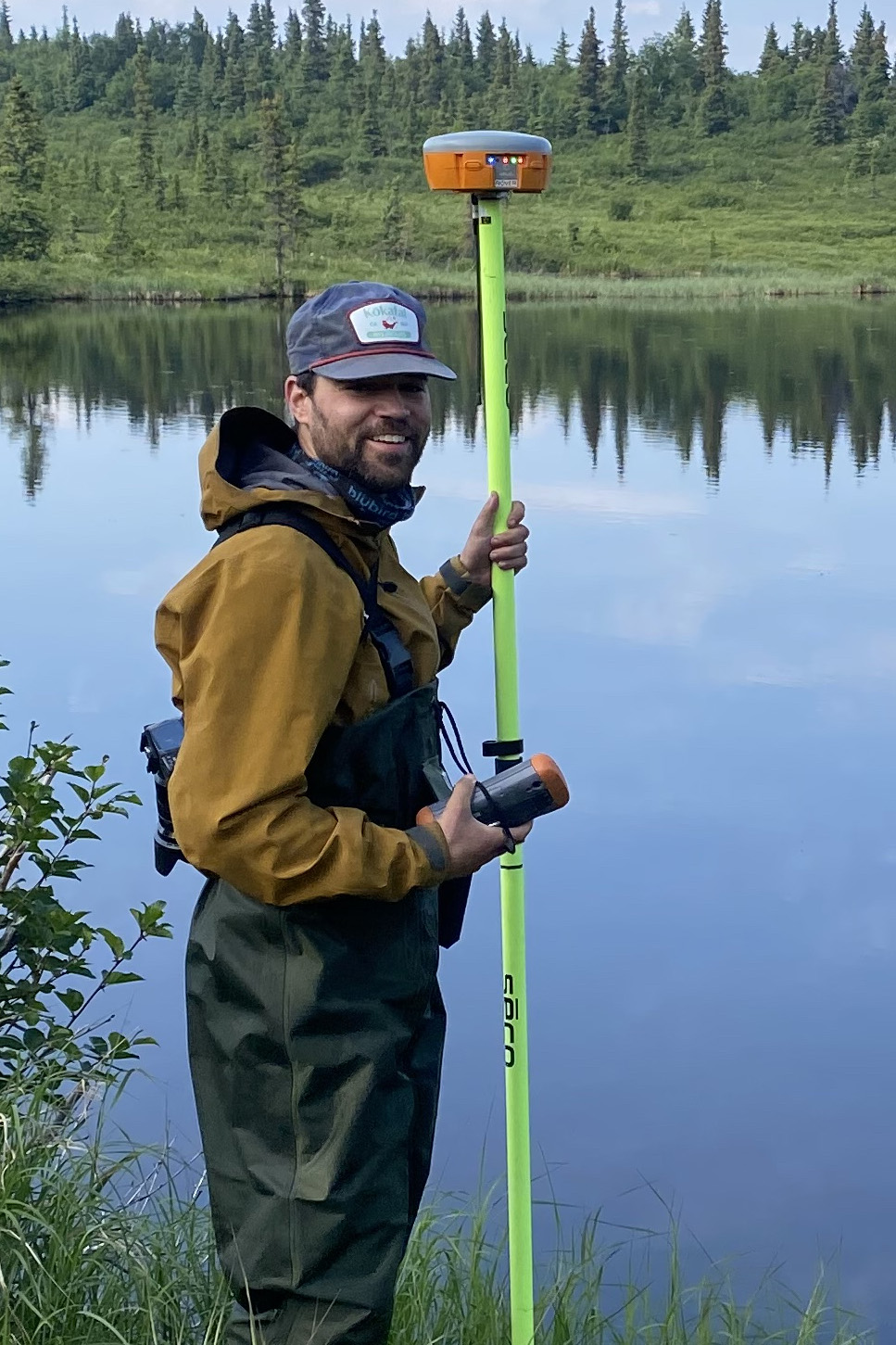The timing and magnitude of pan-Arctic lake seasonality
Arctic lakes expand and contract over daily to interannual timescales, reflecting and enhancing broad-scale Arctic environmental changes such as amplified warming, the intensifying hydrologic cycle, thawing permafrost, and the regional carbon balance. Numerous studies have examined decadal-scale lake area trends to better understand changes in permafrost conditions, the regional water balance, and ecological structure and function; however, seasonal (intra-annual) lake area changes remain poorly understood due to lack of observations in the Arctic.

Disentangling lake area seasonality is critical to accurately measuring long-term lake area trends. Additionally, high-latitude ecological processes can be just as sensitive to changes to the timing of freshwater fluxes as to their magnitudes. In this project, I documented the open water lake area during the 2016-2023 ice free seasons across the entire Arctic north of 60 degrees, at near-daily frequency. The analysis of these results are ongoing, so the results presented here are just teasers for the time being. More to come…

How do recent changes in snowmelt timing influence interannual lake area variability?  Well, it appears that a given year’s maximum lake area is particularly sensitive to snowmelt timing: earlier snowmelt leads to decreased lake area. This is likely due to both the amount of snow water equivalent stored in the snowpack, as well as changes to the partioning between runoff (to lakes) and evapotranspiration (to the atmosphere) caused by higher spring temperatures. This raises an interesting question about the role of snowmelt timing in decadal-scale lake area changes that were previously attributed to permafrost thaw.
Well, it appears that a given year’s maximum lake area is particularly sensitive to snowmelt timing: earlier snowmelt leads to decreased lake area. This is likely due to both the amount of snow water equivalent stored in the snowpack, as well as changes to the partioning between runoff (to lakes) and evapotranspiration (to the atmosphere) caused by higher spring temperatures. This raises an interesting question about the role of snowmelt timing in decadal-scale lake area changes that were previously attributed to permafrost thaw.
